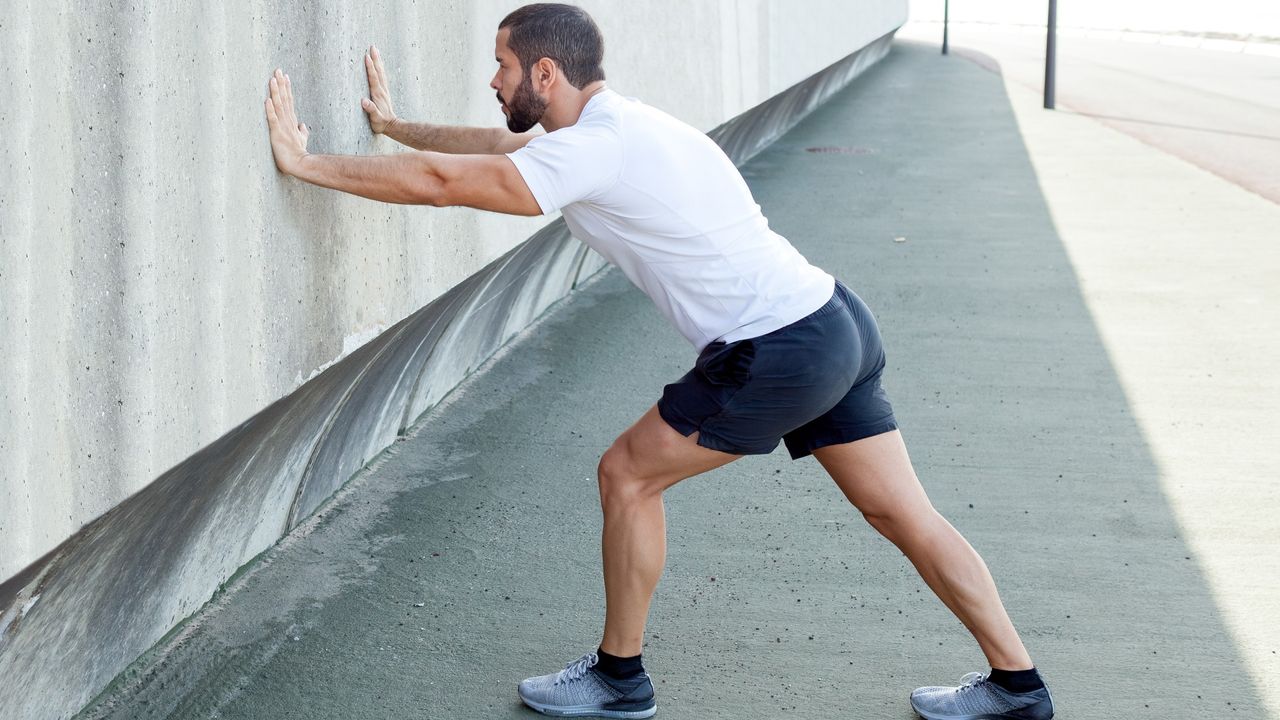
When you’ve got everyone from basketball players to fibromyalgia sufferers in your comments section hailing this stretch exercise as a game-changer, you know you’re on to something good.
Try fixing weak ankles by stretching them in four ways using this four-way ankle stretch designed for everybody, at every age. If you know you need to improve lower-body mobility and have tight ankles when you squat, lunge, walk, or run, this is for you.
Your coach, Todd, of Feel Good Life, is on a mission to help the over-50s eliminate joint pain using natural methods. Not only is he trained in manual medical therapy, he’s also certified in nutrition, personal training, herbal medicine, acupuncture and massage therapy.
Here’s the one stretch he recommends for fixing weak ankles.
What is the 4-way stretch?
The stretch, as the name suggests, has four parts: ankle dorsiflexion, ankle plantarflexion, ankle inversion and ankle eversion.
Ankle dorsiflexion
Dorsiflexion refers to flexing the ankle so that your toes point upward and your heel downward. To do this stretch, grip your heel and toes and pull against them to drive the toes toward you. Hold the stretch, then release and repeat.
You should feel this stretch across the front of your lower leg, the back of the ankle and the top of your foot. If you experience pain, stop, or reduce the intensity of the stretch if that helps.
Ankle plantarflexion
To remember this, think about planting your foot down on the ground. This refers to pointing the toes downward as the heel lifts. You should feel this down the front of the foot.
To perform this stretch, place your hands over the tops of your feet and pull down. Hold the stretch, then release and repeat.
Ankle inversion
Inverting the foot means you’ll turn the bottom of the foot to the inside rather than away from the body. To do this, place your right foot on your left knee, then grip the toes and ankle and pull the foot in until you feel the stretch down the outer ankle and foot. Hold, then release and repeat.
Ankle eversion
This means turning the foot away from you. Set up as you would for inversion, grip the ankle and toes, then twist in the opposite direction — outward and downward.
Alongside the knee and hip joints, tight ankle joints are a key contributor to leg pain, and can even lead to muscle imbalance and injury elsewhere in the body if left untreated.
Limited range of motion in the ankles will also show up in how you move and how well you can perform exercises. In fact, it’s one of the biggest problems I see in people when they squat, and it shows up in their squat mechanics, including a problem called butt winking (when the pelvis slightly tucks under at the bottom of a squat).
In short, your ankles matter. They help you balance and contribute toward stability and coordination — you do stand on your feet for long periods of your life, after all.
Visiting a gait analysis expert to see how you walk and run is the first step to treating weak or tight ankles, as they can tell you if you are a neutral stepper or if you overpronate (place weight on the medial side of the foot) or underpronate (roll the ankle outward as you land the inner foot).
This will help you when you come to pick the best running shoes for your foot mechanics.
Next, I recommend trying an ankle mobility routine that will warm the ankles through a full range of motion in all directions (like the stretch above) to maximize the movement in your feet.
Alongside stretching, focus on adding ankle-strengthening exercises to your routine, including movements like hill climbs, step-ups, stair climbs, calf raises and lunges.
While a regular stretching routine is effective, you’ll also need to build ankle strength to reduce your likelihood of falls and injuries as you age.
Follow Tom's Guide on Google News to get our up-to-date news, how-tos, and reviews in your feeds. Make sure to click the Follow button.







